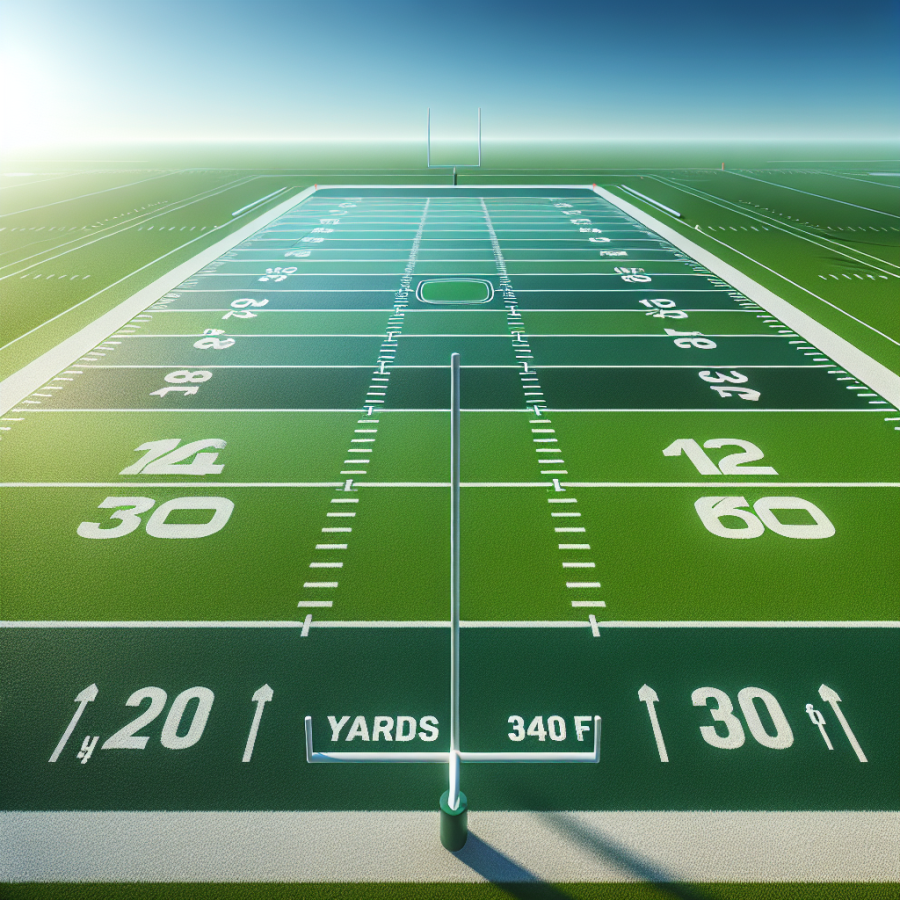Exploring the Dimensions: The Standard Length of a Football Field in Feet
When we think about a standard football field, we are usually referring to an American football field, whose dimensions are defined by the National Football League (NFL) regulations, or a soccer field, which follows the guidelines established by FIFA (Fédération Internationale de Football Association). However, for the sake of clarity, let's focus on the American football field dimensions, which are typically consistent among both professional and college levels.
The American football field is marked by its rectangular shape and strictly defined length. Precisely, the length of an American football field from goal line to goal line is 100 yards, which equates to 300 feet. However, this measurement does not include the end zones, which are vital sections at both ends of the field where points are scored. Each end zone extends the field by an additional 10 yards or 30 feet on both sides. Therefore, if you include the end zones in your measurement, the total length from the back of one end zone to the back of the opposite end zone is 120 yards, or 360 feet.
This does not account for the boundary lines that run around the perimeter of the field. These border lines add a slight length to each side of the field, although they are negligible in terms of the overall measurement. The regulatory bodies ensure that the dimensions of the field remain consistent to keep the playing conditions identical across different venues, which is critical for fair play.
Besides the length, the width of the field is also defined by strict guidelines. The width of an NFL football field is 160 feet from sideline to sideline. Unlike the length, the sidelines don't account for additional space beyond the playing field—what you see is what you get regarding the width.
Understanding these strict measurements of the football field, particularly in feet, is essential for architects and designers who are responsible for constructing football stadiums, as well as for players and coaches who strategize and plan according to field dimensions. Spectators and fans also benefit from understanding the dimensions as they can better appreciate the athletes' skills and the dynamics of the game.
In summary, while it's essential to note the existence of other codes of football and variations in fields for different leagues and countries, an American football field's standard length, when measured in feet, has clear and established norms.
Read also:
Bungee Jumping: The Ultimate Adrenaline Rush
From Endzone to Endzone: Understanding Football Field Measurements
When it comes to understanding the measurements of a football field, we embark on a journey from one endzone to another. The standard football field's length for professional play is meticulously measured at 120 yards, which translates to 360 feet. This stretch includes two endzones, each 10 yards (or 30 feet) deep, which is where the field earns its distinctive "100 yards of playing field plus two endzones" description.
As we unravel the length of the football field, it's important to note that the playing field itself between the endzones measures 300 feet. These measurements ensure a consistent playing experience across all NFL games. Sidelines run parallel along the length of the field, marking the out-of-bounds area, where coaches and players stand, outside of active play.
Every ten yards from the goal line is clearly marked by descending numbers until the 50-yard line, which represents the midfield point. From there, they ascend once again toward the opposing endzone. This numeric system plays a critical role in both the strategy and play calling during the game.
The professional football field’s extensive length contributes to the strategic elements of the game, where high-speed sprints, long-distance throws, and tactical kicks make the measurement a key feature of the sport. Playing on a field that measures 360 feet from endzone to endzone requires athletes to maintain a high level of endurance and speed, ensuring the action is always dynamic and the potential for game-changing plays is ever-present.
From a construction and design perspective, the length of the field also dictates the size of stadiums and the overall layout of the playing area. Whether natural grass or artificial turf, the playing surface must be maintained with precision, as even slight deviations can affect the game's integrity.
In the professional leagues, the exact measurement is a regulation that all teams must follow, creating a standardized playing environment regardless of location. This assures that both home and away games are played on a level field, literally and figuratively, thereby maintaining the fairness and competitiveness of the game.
Understanding the football field's dimensions is essential to grasping the sport's complexity, as it influences everything from the rulebook to athlete conditioning, coaching tactics, and fan experience. From the back of one endzone to the other, these 360 feet are not merely a measure of distance but a canvas upon which the game is painted in bold and strategic strokes.




